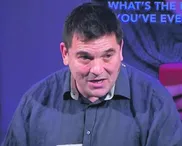As the war in Ukraine grinds on, many commentators are looking for historical parallels to point towards how the conflict might end, what the impact may be on those forced to endure it and what life might be like afterwards.
The experience of Aleppo, in north west Syria, may provide a few clues. Early on in the Ukrainian conflict a BBC correspondent said that, if we were unaware of what Russian battle tactics look like, ‘then we had not been paying attention’. He drew a direct line between what Putin’s military did, first in the Chechen capital Grozny during the war of 1999–2000, which resulted in the United Nations calling it ‘the most destroyed city on earth’ by 2003, and then Syria.
As in Chechnya, Russian intervention played a decisive role in overwhelming opposition forces to President Bashar Assad after the civilian uprising of 2011. Putin’s forces deployed tanks and mortars against rebel groups based in civilian areas and later used barrel bombs, missiles and shells in heavily populated regions. Russia then continued that strategy, including attacks on markets and hospitals, only with much greater fire power. Experts believe that some of the weapons now being used in Ukraine were first tested in Syria.







